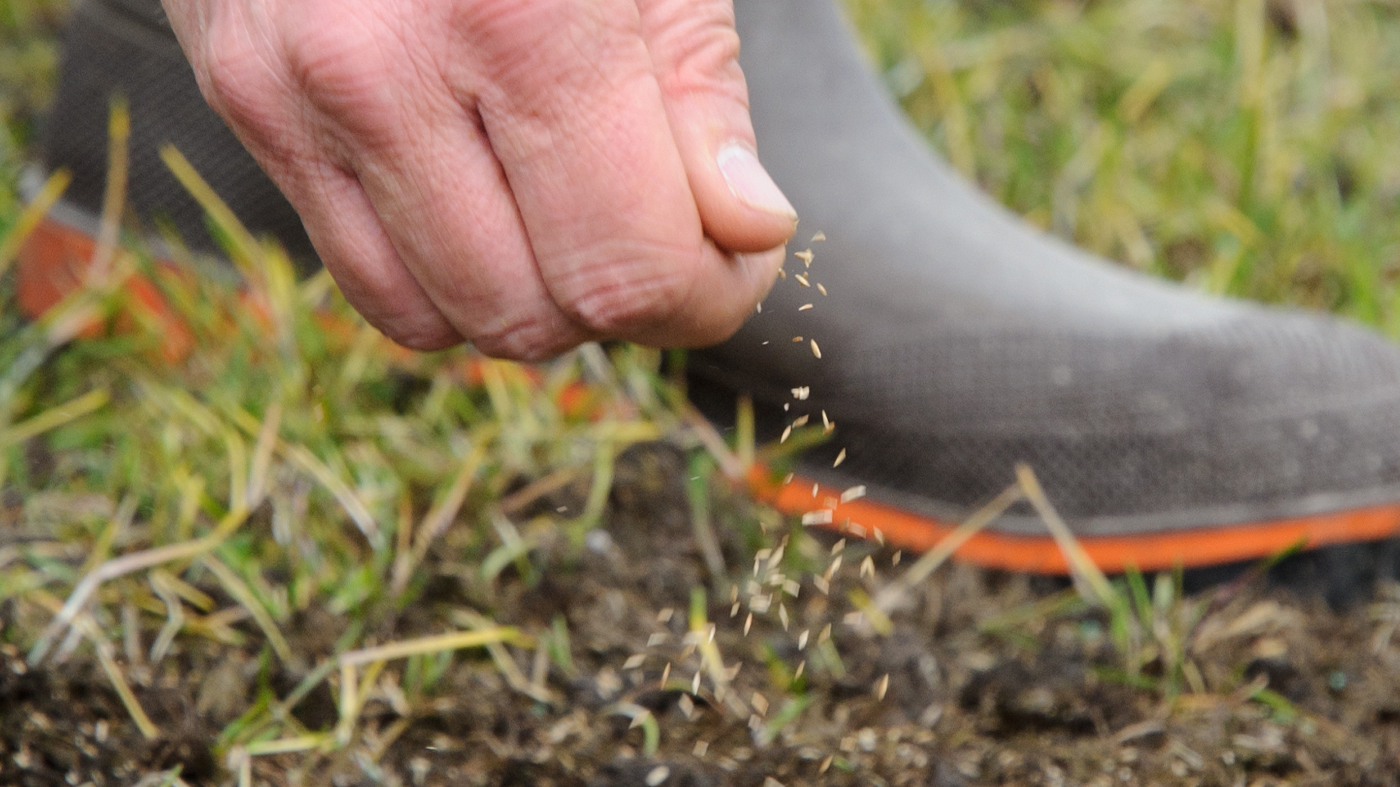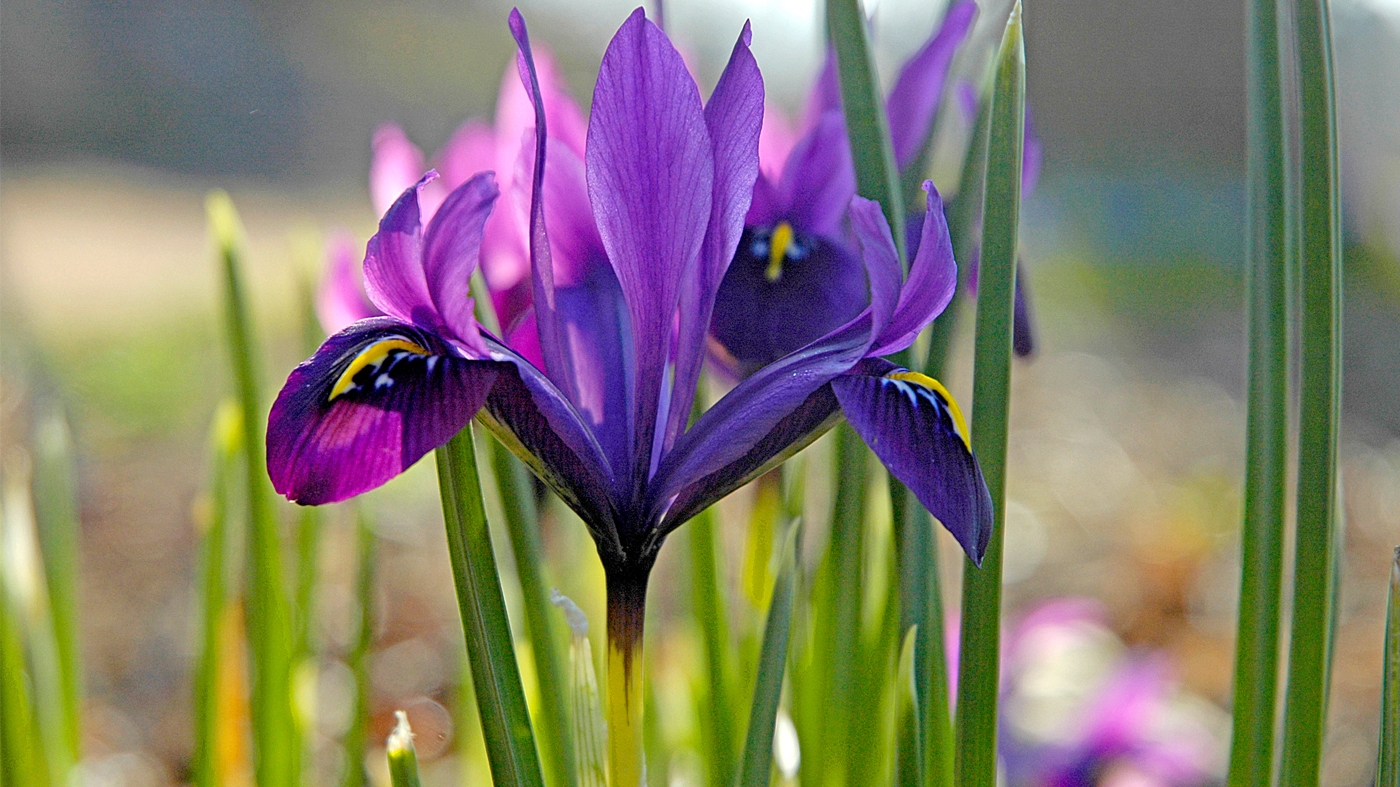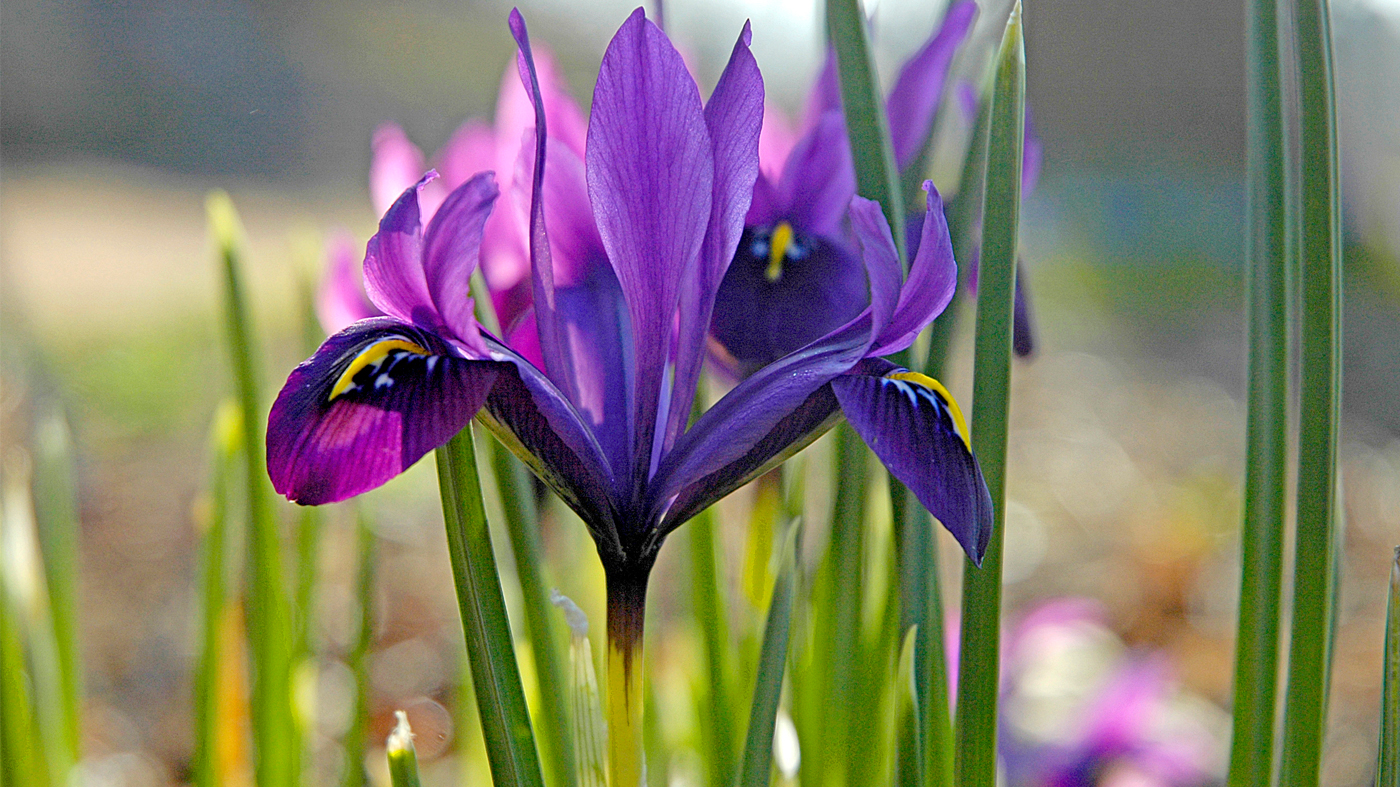

Tips & Techniques
Fall Lawn Care
Many homeowners do their lawn renovation in spring, but in fact this work is better done in fall once summer's heat and drought have passed. In fall, cool air temperatures and warm soil are perfect for seed germination, whereas in spring the cool soil and chilly air are less favorable. In addition, lawn weeds, such as dandelions, grow less vigorously in fall than in spring, when they compete with grass seedlings.

Fall is also a good time to assess your lawn. Before you do anything, ask why your lawn is not doing well. Do you have grubs? Too much shade? Compacted soil? You should address the source of the problem and not continue just to reseed. If conditions are generally good but your grass is thinning and weedy with bare spots, it is probably time to renovate.
Tips for Renovating your Lawn in Fall
- If you have areas where weeds or undesirable grasses are growing densely, apply glyphosate. This will kill grass as well as weeds, so do not use it where your grass is healthy. After applying, wait two to three weeks before preparing the soil and spreading seed.
- Use a steel rake to loosen the soil several inches deep. The seed must have good contact with the soil for germination to occur.
- Broadcast seed over the prepared soil. Be sure to use a variety of seed compatible with your existing lawn and its sun/shade conditions. Most people in the Chicago area have a bluegrass-blend lawn and should use either a high-quality bluegrass blend or a shade blend for overseeding. Seeds to avoid include bunch-type tall fescue (although fine fescues are desirable), zoysia, buffalo, rough blue, and annual rye.
- Top-dress the seed with a very thin, 1/8-inch layer of straw, leaf mold, or peat moss to hold seed in place and help keep it moist.
- Water very lightly but frequently until the seed germinates in 10 to 14 days. Usually, this means wetting down the seed once or twice a day. Do not let the seed dry out. After about two weeks, water deeply once a week to encourage strong rooting.
- If you are seeding a new lawn, the procedure is similar. Either strip away all existing sod or use a broad-spectrum herbicide to kill all existing grass and weeds, and then rototill the dead material into the soil. As with renovation, if you have used an herbicide, wait two to three weeks before preparing the soil and applying seed.
Think Before You Sow
Before adding seed, add compost to the soil and rototill it to a depth of 8 to 12 inches. Soil preparation is critical to the success of a new lawn, whether seed or sod. Optimally, a foot of good, loose soil is key to seed germination. Seeds simply won't germinate on compacted soil, and sod will decline over time if the soil is not prepared properly.
Prime seeding time is late August until mid-September. The grass requires enough time after germinating to mature and thicken up before cold weather sets in. This usually means that the grass has been mowed at least twice.
Overseeding does not need to be done routinely every year. It is better to concentrate on good cultural practices that will help maintain the health of your lawn. Core aeration, a mechanical process that pulls many pencil-size plugs of soil from an existing lawn, is one of the most important practices to keep a lawn healthy. It reduces soil compaction, increases soil porosity, brings organic matter up from below and limits the thatch layer. Overseeding is very effective after core aeration because you have already created pockets for the seeds.
Thatch: The Core of the Matter
Healthy lawns have less than ½ inch of thatch at the soil surface. Thatch is nothing more than dead grass that has not yet decomposed. Over time, the thatch layer breaks down, returning to the soil as organic matter, and is replaced by new thatch. This is a normal process. Dethatching a bluegrass lawn with a power rake is rarely necessary. It also can be damaging because it pulls up individual grass plants by the roots, destroying much of the lawn in the process. Core aeration is a much better way to deal with excessive thatch. Lawns should be aerated once a year except during hot, dry spells or when the soil is too wet. Early fall is an excellent time for this chore.
Cultural practices that can cause too much thatch include overfertilizing, which leads to excessive top growth, and watering too frequently or too lightly, which results in shallow roots. Infrequent mowing can also cause thatch to build up if very long clippings are left on the lawn.
Fall is also an important time to fertilize your lawn. The typical fertilization schedule includes treatments in early May, early September, and early November. However, if you fertilize only once or twice a year, concentrate on the fall applications, especially the late one, since it promotes root growth and prepares grass for an early green-up the next spring.
Watch for Weeds and Grubs
Weed control is another fall lawn task. When summer heat subsides in late August, weeds start to grow actively again, taking nutrients into their root systems. This makes them vulnerable to herbicides. As with most chemical controls, herbicides are best used selectively, by spot spraying individual weeds, rather than treating an entire lawn. Spring lawn weeds are often the result of what you left in the fall. Herbicides cannot be used on newly seeded lawns, however, until they have been mowed a couple of times and the individual grass blades have thickened.
A discouraging and all too common lawn problem in northern Illinois is the presence of annual white grubs. Although homeowners may see the damage at the end of summer, this is one problem that can be treated earlier in the season. Grubs, which are the larval stage of beetles, damage lawns by feeding on grass roots. The worst damage appears in mid-August when a grub-infested lawn develops brown patches and the sod can be easily lifted and peeled back. Fall treatment with an insecticide is not recommended unless there are as many as 10 to 12 grubs per square foot of lawn, the threshold at which lawn damage is measured.
Imidacloprid is an effective chemical treatment for grubs and should be applied in early July, about four weeks before grubs begin eating grass roots. If you notice damage late in the season, you might as well just repair the lawn and control the grubs next year.
Ironically, more damage can be caused by skunks, raccoons, or birds digging for grubs, even when grub populations are quite low. Animals sometimes come back out of habit and dig up lawns that no longer have grubs. If you have a healthy lawn, you'll be surprised at how it can bounce back. Press back the dug-up sod and water it well — it probably will come back just fine.

